Within 100 years very few will be able to read the cursive handwriting we mastered in bygone centuries. It’s on the way out and very rarely do I use it now, except for signatures and writing Christmas card greetings. Soon you’ll need the services of a handwriting expert to decipher it. I don’t mean someone expert at identifying the writer, but expert at just working out what it says.
This was in my mind when I began reviewing Lenovo’s tiny 2-in-1 Android Yoga Book. It’s so thin and light that in portrait mode it mimics the dimensions of a school notebook: just 26cm wide and 9mm thick, weighing 690 grams. It comes with Windows 10 or Android Marshmallow (6.0.1) installed. I chose to review the latter because it runs more efficiently with Intel’s lower power Atom x5-Z8550 Cherry Trail processor.
Yoga Book is a curious mix of past and future. Open it, and you have an IPS full high definition display on the left, and a capacitive touch-sensitive area on the right where you draw, scribble and write cursive script with Lenovo’s stylus, provided in the box. Whatever you write is instantly replicated on the display to the left and you can save images of handwritten notes electronically.
Further, you can take out the stylus tip out and replace it with an ink cartridge, and write on paper on the right and everything is replicated to the left. You end up with both physical and digital copies of screeds of notes.
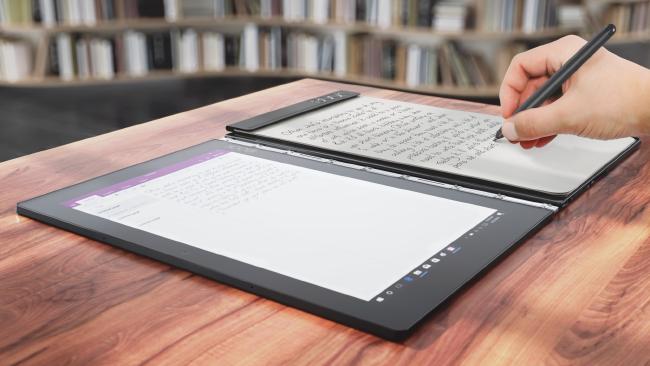
When you’re not using the Yoga Book to take handwritten notes, you press a button and the blank digitised pad area lights up as a virtual keyboard. You can then use Yoga Book as a regular 2-in-1. It has a well-engineered watchband hinge that lets the screen rotate 360 degrees around the pad. You get the four standard 2-in-1 modes: notebook, tablet, display and tent plus angles in-between.
It took Lenovo three years to develop the Yoga Book and with its innovative design and functionality, you can see why. But there are issues with Lenovo’s approach.
First, I wouldn’t use Yoga Book to record screeds of handwritten notes as I rarely create them. In image form, handwritten notes aren’t searchable unless you convert your handwriting to digital text. Depending on your handwriting quality, that can be hit and miss. Depending on your handwriting quality, that can be hit and miss.
Second, I am used to seeing my handwriting appear under the pen as I write it, not off to the left on a display. That rules out me using the stylus without the ink cartridge. And that means every so often paying for ink refills. If you sketch in colour, you’ll have normal dark ink flowing underneath your pen with the colour appearing on the display on the left.
In concept Lenovo has taken sketching on a tablet screen directly and shifted it to sketching on a separate Wacom-style device next to the screen. That may suit some but not me.
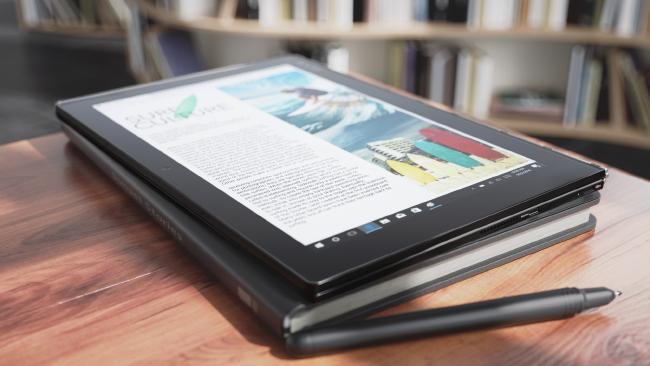
Another issue is the keyboard. It’s cooler than school to have an electronic, virtualised keyboard suddenly appear on an otherwise blank capacitive touch area. It’s even cooler that it works as a real keyboard and you can type on it. In practice it has limitations.
The main issue is accuracy. On a regular keyboard you can feel when you hit the edge of a key or mis-hit it altogether. You don’t get that feedback with this keyboard. There’s no travel. You can suddenly look up and see your text littered with mistakes. Lenovo understands the ergonomics of keyboards, having produced excellent ones for its X1 Carbon notebooks with curved keys that help your fingers slide to the centre.
I managed to adapt to the Yoga Book keyboard over a few days, but I couldn’t type that quickly and there were occasional latency issues with it not keeping up with my keystrokes as I speeded up.
Should Lenovo persist with the Yoga Book concept? Definitely “yes”. I’ve seen the online interviews and there’s great passion behind this product. I love the size and feel of the lightweight Lenovo Book, but I’d prefer one that relied less on dealing with handwriting and sketching for its raison d’etre.
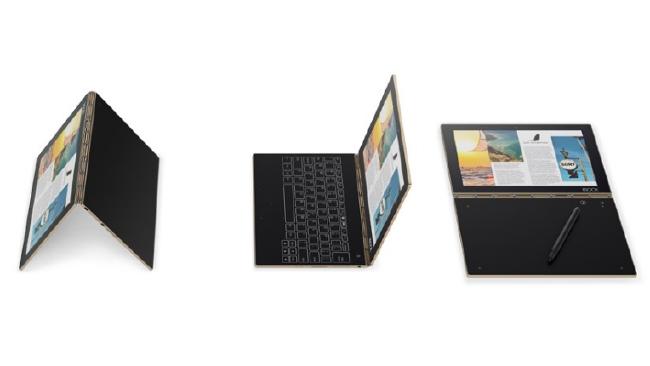
Instead I’d love a Yoga Book that uses the latest in voice recognition technology that companies like Google are developing, that it becomes a voice dictation powerhouse of the future. Given its small size and weight, versatility as a 2-in-1, decent battery life, good screen resolution and also decent sound reproduction, it would be a winner.
As for the electronic virtual keyboard concept, Lenovo could look for alternatives that don’t hamper typing speed. Perhaps they should contact Australian company Sonder which has been developing some interesting alternative keyboards. We recently reported Sonder’s dealing with Apple but a takeover hasn’t been announced yet.
The Yoga Book comes in gunmetal grey and champagne gold and has 8 and 2 megapixel rear and front facing cameras. You get a microUSB port for charging, mini HDMI, a headphone jack and slot for a microSD card.
But there’s no full USB slot. I was able to connect and read a regular flash drive using a microUSB to USB connector but it wanted to reformat my entire WD 1TB external hard drive when I connected it. I easily read the contents wirelessly of my external NAS box.
There are limitations with running a 2-in-1 on Android, here Android Marshmallow, but you need a lightweight operating system of sorts on Atom powered devices.
Having said all this, I still give credit to Lenovo for coming up with such an original design. It’s great. This is more a concept product but over time could morph into a great product.
Lenovo Yoga Book (Android Marshmallow version)
Price: From $799 Android, $999 Windows
Rating: 7/10
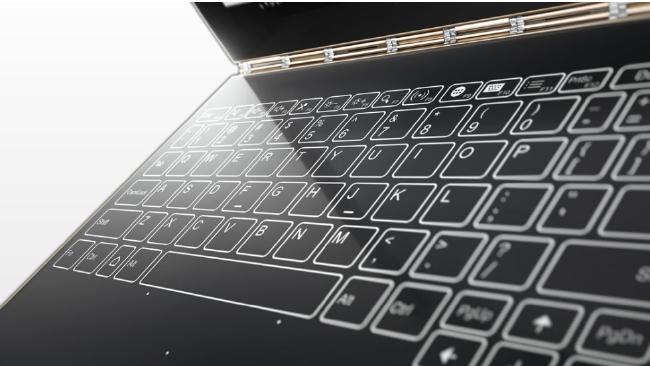
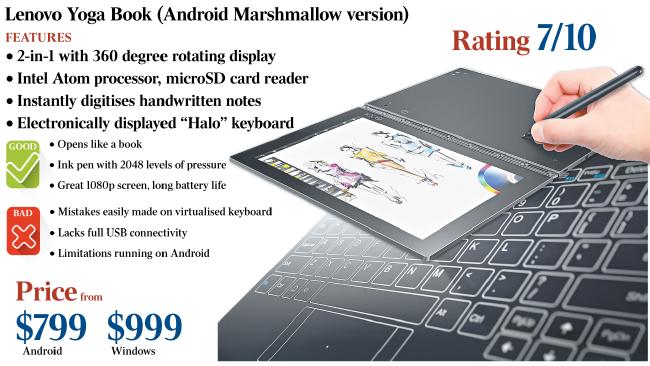

Reader comments on this site are moderated before publication to promote lively and civil debate. We encourage your comments but submitting one does not guarantee publication. We publish hundreds of comments daily, and if a comment is rejected it is likely because it does not meet with our comment guidelines, which you can read here. No correspondence will be entered into if a comment is declined.
Custom HTML Preview
Follow Us
Life, delivered weekly
Great lifestyle features emailed to you from The Australian
MORE STORIES
Review: Lenovo Yoga Book is a curious mix of past and future
Within 100 years very few will be able to read...
Exclusive Minyama Island home fronts deep river channel
The sprawling Sunshine Coast island mansion of property developer Shaun...
Tata, UNSW to exchange ideas and personnel
Indian software services giant Tata Consulting Services has secured an...
Stocks give bank Monday’s gains as energy sector weighs
The Australian sharemarket has given back almost all of Monday’s...
Corporate tax take at five-year low: ATO
As the Turnbull government seeks parliamentary banking for its $50...
Follow Us-
-
Find us on
-
Twitter
-
Privacy Policy
-
Relevant Ads Opt-out
-
Cookie Policy
-
Subscribe
-
Subscriber Rewards
-
-
About Us
-
Contact Us
-
Advertise With Us
-
Our journalists
-
Photo Sales
-
News Archive
-
-
Help
-
Accessibility
-
-
Editorial Code of conduct
-
Standards of Practice
-
Terms & Conditions
-
Subscription terms
-
Group Subscription Terms